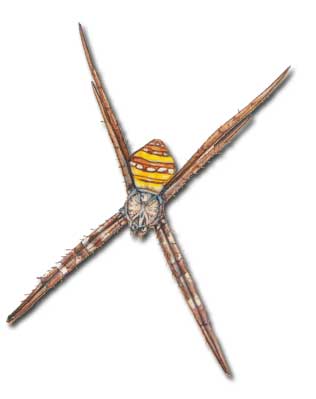Male spiders spend their whole life preparing for the time they will mate. All of their energies, movements, feedings, molting, and even the ultimate sacrifice of their own lives are designed to aid the continuation of their species. When males are sexually mature, they transform a hunger for food into one of procreation. Before seeking a partner, the male needs to prepare for courtship by pumping his palps full of sperm. A male does not have a penis. He deposits sperm from beneath his body onto a specially constructed silken mat and from there siphons it into his palps. He is now ready for mating.
 Unfortunately for the male, the female is always food motivated, whether it be insects or male spiders. After finding a partner, males are driven by two conflicting motivations; one of sexual desire, the other for self preservation. Males of different species will use a range of approaches when wooing females. These vary from the rhythmic strumming of the web by the male to the seductive waving of the Wolf Spider’s front legs.
Unfortunately for the male, the female is always food motivated, whether it be insects or male spiders. After finding a partner, males are driven by two conflicting motivations; one of sexual desire, the other for self preservation. Males of different species will use a range of approaches when wooing females. These vary from the rhythmic strumming of the web by the male to the seductive waving of the Wolf Spider’s front legs.
Most males make tentative approaches towards the female, with limbs trembling and appendages chattering. Many males are equipped with structural adaptations for gripping onto the female and holding her fangs away from him. Behavioral adaptations include: tying females down with silk; mesmerizing them into a trance-like state and in some species, approaching and mating without the female even knowing.
If the male is successful, he will have placed his palps near the female’s egg tube and squeezed out the sperm fluid which the female stores in special pockets until she is ready to lay her eggs. Once copulation has taken place, the male must flee or risk being captured and eaten by the female who uses him as a valuable energy source in the production of her eggs.
Even if the male does escape, he will soon die as he takes no further interest in feeding – his mission in life is now complete. Females build protective egg-sac until fully formed. At this stage they hatch, but remain inside the egg-sac attached beneath her abdomen. Once the spiderlings have emerged, they will ride on her back for up to 7 months before dispersing.

















